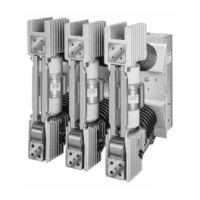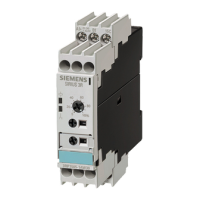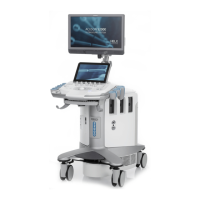Maintenance
• Checks of the primary power path
• Cleanliness check
• Inspection of primary disconnects
• Checks of the stored energy operator mechanism
• Maintenance and lubrication
• Fastener check
• Manual spring charging check
• Contact erosion check
• Electrical control checks
• Wiring and terminals check
• Secondary disconnect check
• Automatic spring charging check
• Electrical close and trip check
• Vacuum integrity check
• High potential test
• Insulation test
• Contact resistance test
• Inspection and cleaning of breaker insulation
• Functional tests
Table 1. Maintenance Tasks
The use of unauthorized parts in the repair of the
equipment, or tampering by unqualified personnel will
result in dangerous conditions which wll cause death,
serious injury or equipment damage.
Follow all safety instructions contained herein.
Breaker Type
kV
Number of
Years/Closing Operations
10 years/10000 operations
5 - 38 kV
16
The list of tasks in Table 1 does not represent an exhaus-
tive survey of maintenance steps necessary to ensure safe
operation of the equipment. Particular applications may
require further procedures. Should further information be
desired or should particular problems arise which are not
covered sufficiently for the Purchaser’s purposes, the mat-
ter should be referred to the local Siemens sales office.
Checks of the Primary Power Path
The primary power path consists of the three vacuum in-
terrupters, the three upper and the three lower primary
disconnects. These components are checked for cleanli-
ness and condition. The vacuum interrupters are also
checked for vacuum integrity.
Some test engineers prefer to perform the contact erosion
check during the manual spring charging check of the op-
erator, since charging of the springs is necessary to place
the contacts in the closed position.
Also, the vacuum integrity check is usually performed in
conjunction with the High Potential tests.
These instructions follow the recommendation that these
tests (contact erosion/manual spring charging check, and
vacuum integrity/high potential tests) will be combined as
described.
Cleanliness Check
Figure 2 is a side view of the 3AH circuit breaker with the
insulating barriers removed (if furnished) to show the
vacuum interrupter, and the upper and lower primary dis-
connects.
All of these components must be cleaned and free of dirt
or any foreign objects. Use a dry lint-free cloth. For stub-
born dirt, use a clean cloth saturated with denatured alco-
hol.
Checks of the Stored Energy Operator Mechanism
The stored energy operator checks are divided into me-
chanical and electrical checks for simplicity and better or-
ganization. This first series of checks determine if the ba-
sic mechanism is clean, lubricated and operates smoothly
without control power. The contact erosion check of the
vacuum interrupter is also performed during these tasks.
Maintenance and Lubrication
Table 2: Maintenance and Lubrication Intervals (ANSI
C37.06 Table 8 - Usual Service Conditions) Maintenance
Based Upon Number of Breaker Closing Operations
The interrupter operator mechanism is shown in Figure 13
with the front cover and the operator control panel removed
to show construction details. Both the tripping spring and
the closing spring are shown. The movable end of the
closing spring is connected to a crank arm. The movable
end of the opening spring is connected to the jack shaft by
a pull rod.
Clean the entire stored energy operator mechanism with a
dry, lint-free cloth.
Check all components for evidence of excessive wear. Place
special attention upon the closing spring crank and the
various pushrods and linkages.

